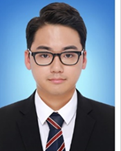| B-KN-1 |
| Shinaya Toyokuni (Nagoya
University, Japan) |
| Low-temperature
plasma as a ferroptosis inducer in cancer cells |

|
|
|
|
|
|
| Shinya
Toyokuni was born in 1961 in Japan. He received M.D. from Kyoto University in
1985, and Ph.D. from Kyoto University Graduate School of Medicine in 1991.
Since 2008, he is a Professor of Department of Pathology and Biological
Responses, Nagoya University Graduate School of Medicine. His interest has
been the role of iron and reactive species in carcinogenesis and tumor
biology. He proposes that low-temperature plasma is a ferroptosis inducer in
cancer cells. He is the deputy director of Center for Low-temperature Plasma
Sciences in Nagoya University from 2021. He is the President of the Japanese
BioIron Society and the past President of the Society for Free Radical
Research International. He is also an organizer of Ferroptosis Meeting in
Cold Spring Harbor Asia. |
|
|
| B-KN-2 |
| Yuzuru Ikehara (Chiba
University, Japan) |

| The
feasibility of using ions and charges in the medical field. |
|
|
|
|
|
|
|
| Yuzuru
Ikehara received his medical doctor's license in 1994 and his Ph.D. in
Pathology in 1998 (Shiga Univ. Med. Sci.). Since 2015, he has been a
Professor at the Department of Pathology of the Graduate School of Medicine
at Chiba University, Japan. He discovered the phenomenon of soluble protein
aggregation in response to the charge provided by non-equilibrium atmospheric
pressure plasma and developed hemostatic equipment that incorporates this
principle. Based on these successes, he has started next-generation
interdisciplinary research projects covering a fused area of plasma science
and medicine, which should be called "electrostatic pathology." The
International Society for Plasma Medicine awarded him the "Plasma
Medicine Awads" in 2022. |
|
|
| B-KN-3 |
| Mudtorlep Nisoa
(Walailak University, Thailand) |
| Low-temperature
and thermal plasma research at PEwave, Walailak University |

|
|
|
|
|
|
| Assoc.
Prof. Dr. Mudtorlep Nisoa was born on June 29, 1968 in Thailand. He received
a bachelor’s degree in physics from Prince of Songkhla University, Hat Yai
Campus, Thailand, M.Sc., and Ph.D. in Plasma Physics from Plasma Science
Center, Nagoya University, Japan, under the supervision of Prof.Tatsuo Shoji,
in 2000. He has been working at Walailak University since 2000. His research
topics are on the physics of plasma productions and plasma applications, and
microwave heating for agricultural and food processing. During the last 20
years, he has developed various plasma productions at low pressure and
atmospheric pressure by DC, RF and microwave discharges. He has published
more than 20 papers in journals and presented more than 50 papers at
conferences on plasma production and applications. He is the head of Plasma
and Electromagnetic Wave(PEwave) laboratory, Walailak University. |
|
|
| B-I-1 |
| Ihn Han (Kwangwoon
University, Republic of Korea) |
| Assessment
of Probability Estimation on Human Tissue-Derived Fibroblast/Stromal Cells
Response to Non-Thermal Biocompatible Plasma |

|
|
|
|
|
|
Ihn
Han was born in 1977 in Korea. Dr. Han has been working at the Plasma
Bioscience Research Center at Kwangwoon University since 2014, conducting
research in the field of plasma science. Based on her background in
biomedical engineering with a major in genetic engineering and the
development of cancer prevention materials, she is currently conducting
research to pioneer various applications of plasma. Her research projects are
mainly about plasma biomedical applications and plasma treatment liquids.
Since 2015, she is focusing on the project "Functional regeneration of
stem cells by plasma therapy" and working with clinicians to develop new
therapies with various clinical implications. From 2016 to present, she
serves on the organizing committee of several international conferences,
including ISPB, ICPM, and IWPCT. |
|
|
| B-I-2 |
| Bih-Show Lou (Chang Gung
University, Taiwan) |
| Cold
atmospheric plasma facilitates wound healing for type 2 diabetes and skin
flap treatments |

|
|
|
|
|
|
| Dr.
Bih-Show Lou received her B.S. Degree in Chemistry in 1984 at the National
Kaohsiung Normal University, Taiwan. She then went to University of New
Mexico, USA where she received her Ph.D. with Prof. Mark R. Ondrias in
Biophysical Chemistry in 1993, then was a postdoctoral fellow at University
of Arizona with Victor J. Hruby, Regents Professor. She joined Division of
Nature Science in Center for General Education, Chang Gung University, Taiwan
in 1995. She has been a full professor since 2005 and the division
coordinator since 2010. Her current research interests include spectroscopy
for chemical and nanomaterial analysis, electrochemistry for biosensor
applications, surface modification by thin film metallic glasses and plasma
electrolytic oxidation processes in biomaterial development for medical
applications, and cold atmospheric plasma applications in antimicrobial
properties and wound healing. She has been featured in Stanford University’s
database of the world’s top 2% in both 2020 and 2021. |
|
|
| B-I-3 |
| Ying-Hung Chen (Feng
Chia University, Taiwan) |
| In
vivo toxicity test of DBD plasma activated water by using Zebrafish |
|
|
| B-I-4 |
| Yun-Chien Cheng
(National Yang Ming Chiao Tung University, Taiwan) |
| Atmospheric-pressure
Plasma Effects on Cancer Cells and RONS Generation for Medical Applications |

|
|
|
|
|
|
| Dr.
Yun-Chien Cheng received the B.S. (2004) and M.S. (2006) degrees in
Electrical Engineering from the National Taiwan University, and the Dr. Ing.
in 2012 from Darmstadt University of Technology. He worked jointly in German
Cancer Research Center, Darmstadt University of Technology, and Karlsruhe
Institute of Technology, Germany for hid Dr. Ing. degree. In 2013, he joined
the Mechanical Engineering Department, National Chiao Tung University as
Assistant Professor. He promoted to Associate Professor in 2018. Dr. Cheng’s
research interests include low-temperature atmospheric-pressure plasma based
medical application, plasma circuit design, and AI medical image analysis. |
|
|
| B-I-5 |
| Jun Sup Lim (Kwangwoon
University, Republic of Korea) |
| Effect
of accumulated charge on the dynamics of plasma bullet propagation |

|
|
|
|
|
|
| Jun
sup Lim was born in 1989 in Korea. He received the Ph.D degree from Kwangwoon
University, Seoul, in 2021. He is currently a postdoctoral researcher at the
Plasma Bioscience Research Center (PBRC), Seoul, Korea. Since 2021, he has
been worked with diagnostics of atmospheric pressure plasma dynamics and
chemical kinetics. |
|
|
| B-I-6 |
| Roopesh Mohandas
Syamaladevi (M. S. Roopesh) (University of Alberta, Canada) |
| Applications
of Cold Plasma Technology in the Agri-food Industry |

|
|
|
|
|
|
| Dr.
M. S. Roopesh is an Associate Professor in the Department of Agricultural,
Food & Nutritional Science at the University of Alberta, Canada. He
received his PhD in Biological and Agricultural Engineering (Food
Engineering) in 2012 from Washington State University, USA. Roopesh joined
the University of Alberta in 2016. In 2022, he was promoted to Associate
Professor with tenure. His research lab
(https://foodsafetyengineering.ualberta.ca/) at the University of Alberta
focuses on sustainable process engineering research. His research team is
working towards developing advanced technologies (e.g., atmospheric cold
plasma, high-intensity light pulses, 3D printing) to improve water and food
safety and the overall sustainability of food systems. Specific research
areas include wastewater treatment, pathogen and mycotoxin reduction,
microbial biofilm inactivation, and plant protein functionality improvement,
using the above-mentioned novel technologies. |
|
|
| B-I-7 |
| Hiromasa Yamada
(National Institute Technology, Nagano College, Japan) |

| Behavior
of Gas Flow and Characteristics of Atmospheric Pressure Plasma Jet for
Bio-Applications |
|
|
|
|
|
|
|
| Hiromasa
Yamada was born in Japan in 1990. He received the
Doctor of Philosophy in Engineering from Tsukuba University in 2018. He has
been an Associate Professor at the National Institute of Technology, Nagano
College since 2022. He is interested in the fundamental phenomena and
applications of an atmospheric pressure plasma jet, such as streamer
(bullet), gas flow turbulence, control of protein adsorption on materials,
and sterilization. |
|
|
| B-I-8 |
| Katsuyuki Takahashi
(Iwate University, Japan) |
| Environmental
control for plant growth and preservation using high-voltage pulsed
discharges |

|
|
|
|
|
|
| Katsuyuki
Takahashi was born in Miyagi, Japan, in 1985. He received B.Eng. from Sendai
national college of technology and M. Eng. and Dr. Eng. degrees from Iwate
University in 2007, 2009 and 2011, respectively, all in electrical
engineering. From 2009 to 2015, He was with Shishido Electrostatic LTD., as a
researcher. From 2015 to 2019, He was an assistant professor with Faculty of
Science and Engineering, Iwate University. Since 2019, He has been with
Faculty of Science and Engineering, Iwate University as an associate
professor. His current research interests include electrostatic discharge,
environmental and agricultural applications of plasma and high-voltage
pulsed-power technology. |
|
|
|
|
|
|
|
|
|
|
|
|
|
|
|
|
|
|
|
|
|
|
|
|
|
|
|
|









